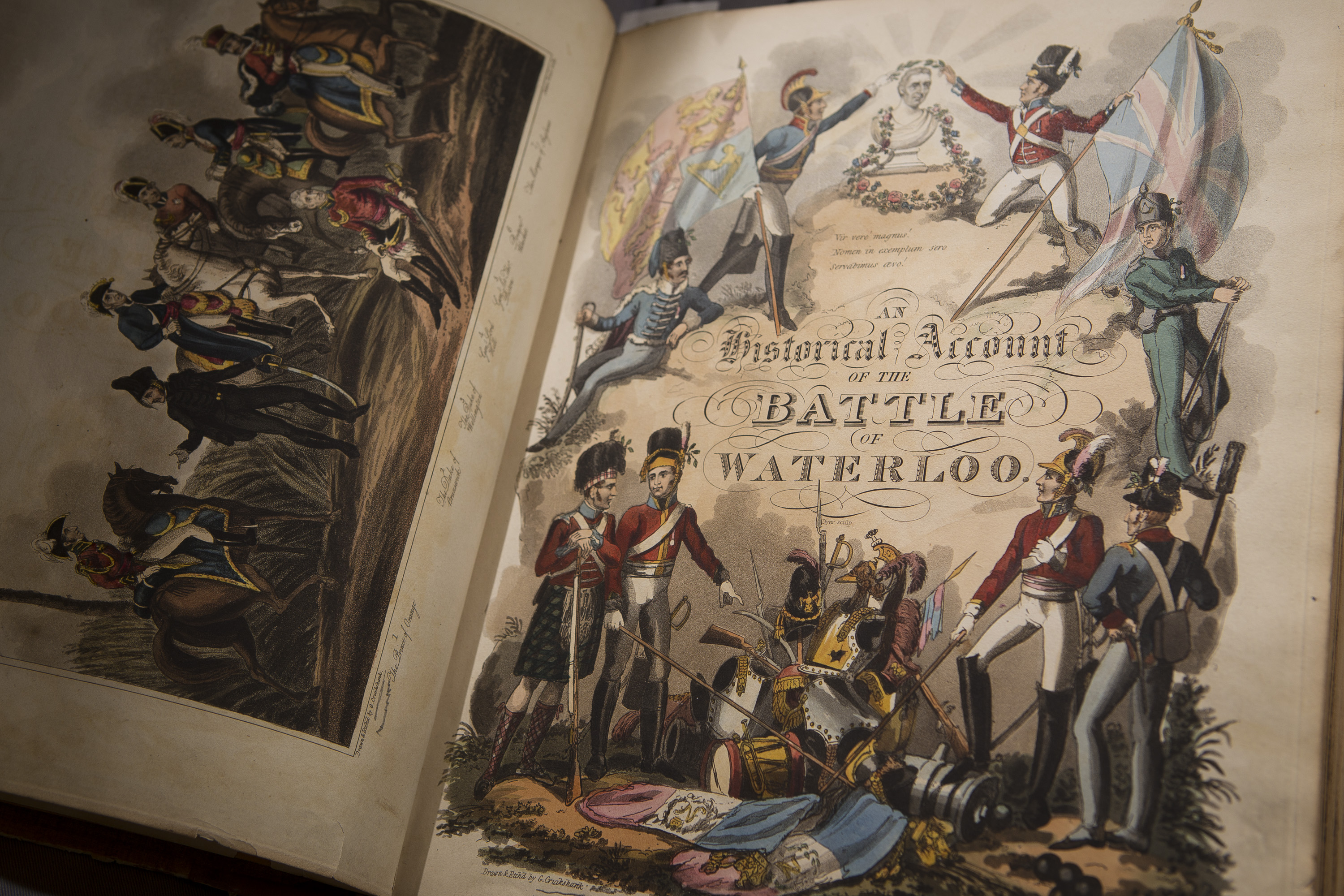 “An Historical Account of the Battle of Waterloo,” written in 1817, gives a detailed narrative of the political events connected to the surrender of Paris and the departure of Bonaparte for St. Helena. (Photo by Jeff Carrion)
“An Historical Account of the Battle of Waterloo,” written in 1817, gives a detailed narrative of the political events connected to the surrender of Paris and the departure of Bonaparte for St. Helena. (Photo by Jeff Carrion)CHICAGO — French general and politician Napoléon Bonaparte won more battles than he lost. But under his command on June 18, 1815, the French army was defeated at Waterloo in a battle that changed the political landscape of Europe.
“Waterloo was a dramatic event; it is considered one of the great battles in history,” said Tom Mockaitis, professor of history and warfare expert at DePaul University.
In addition to the Battle of Waterloo ending the ongoing fights between France and Great Britain, it ended the threat of Napoléon. The battle also was the last time one man would command an army the size of France’s, noted Mockaitis.
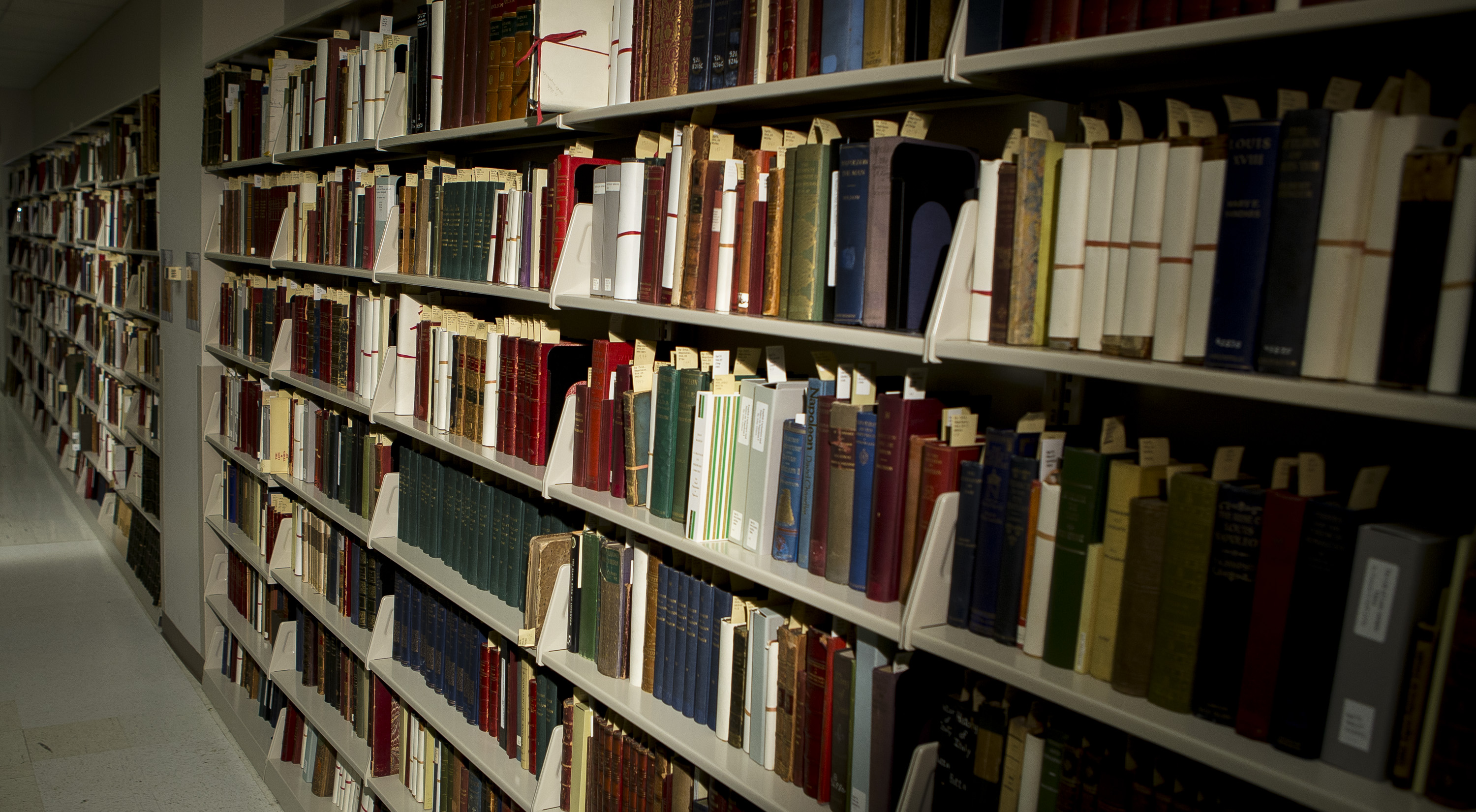 Lining an entire wall in the DePaul University Special Collections and Archives section is the Napoleon collection, which contains 4,000 volumes. (Photo by Jeff Carrion)
Lining an entire wall in the DePaul University Special Collections and Archives section is the Napoleon collection, which contains 4,000 volumes. (Photo by Jeff Carrion)"Like many autocrats before and after him, Napoléon fell victim to his own ambition. In building his empire, he so upset the balance of power in Europe that the other states and empires formed series of coalitions, which ultimately defeated him,” said Mockaitis.
Waterloo was the culmination of what historians refer to as the Second Hundred Years’ War. “It was really an ongoing fight between France and Britain that was being fought for a long time,” said Mockaitis. “The defeat at Waterloo represents the end of that struggle.” The next time Britain and France are on the battlefield, they are fighting on the same side in World War I.
“Battles have a significant cultural dimension to them, they are quite iconic,” said Mockaitis, who is writing a book about the history of warfare in the modern era titled “Conventional and Unconventional War in the Modern World.”
 "The Battle of Waterloo,” written in 1816 contains a series of accounts and details about Napoleon’s last battle. (Photo by Jeff Carrion)
"The Battle of Waterloo,” written in 1816 contains a series of accounts and details about Napoleon’s last battle. (Photo by Jeff Carrion)
Military strategist
“It is amazing the degree in which historians and military leaders focused on Napoléon’s campaigns,” said Mockaitis. “They thought he held the blueprint for success.
“Napoléon is considered to be one of the great captains of history. He succeeded and went as far as he did as a military leader and politician because the French Revolution gave him an army that would fight for a cause,” said Mockaitis.
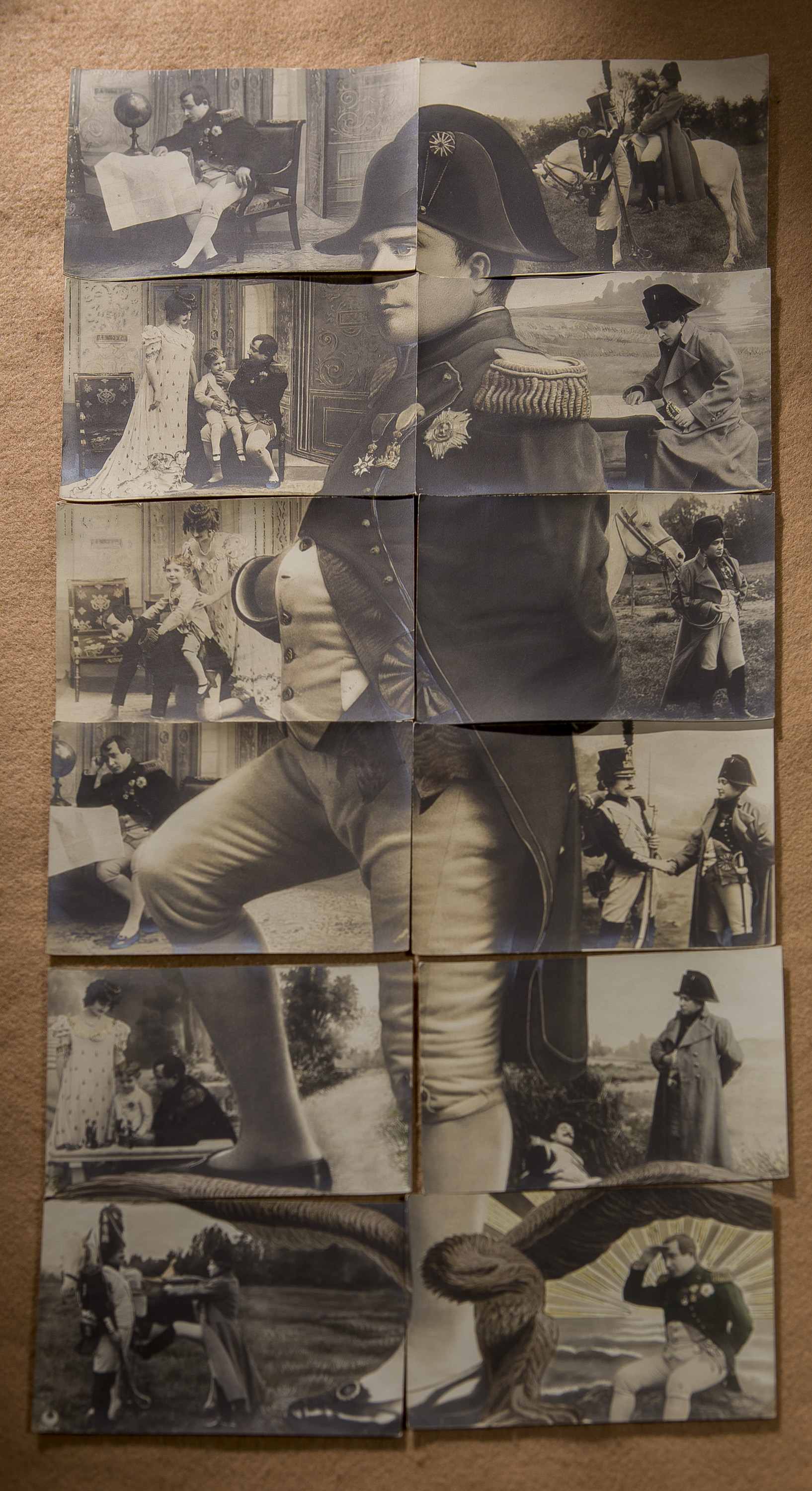 A series of 12 postcards from 1910, when put in the correct order, form a large mosaic depicting Napoleon. (Photo by Jeff Carrion)
A series of 12 postcards from 1910, when put in the correct order, form a large mosaic depicting Napoleon. (Photo by Jeff Carrion)By 1812, other countries he had been fighting began organizing their armies as Napoléon had. Military leaders learned a great deal from Napoléon and began to copy his style of leadership.
“After Napoléon’s era, armies became too complicated for a single man to handle. Even though American generals from the Civil War were students of Napoléon, they couldn’t lead their armies like him. He was the last general who could command armies of the size he would bring to battle,” said Mockaitis.
Napoléon and Waterloo collection at DePaul University
Lining an entire wall in the Special Collections and Archives section in the John T. Richardson Library on DePaul’s Lincoln Park Campus is the Napoléon Collection, which contains more than 4,000 volumes. The collection dates back to 1937 and was started with volumes from the estate of Otto Lemke, who amassed Napoléon literature with a special emphasis on biographical accounts of the French general and his military campaigns.
“While much of the Napoléon Collection is in French, the majority of the Waterloo materials are in English, making them more accessible to a casual reader,” said Jamie Nelson, head of Special Collections and Archives at DePaul.
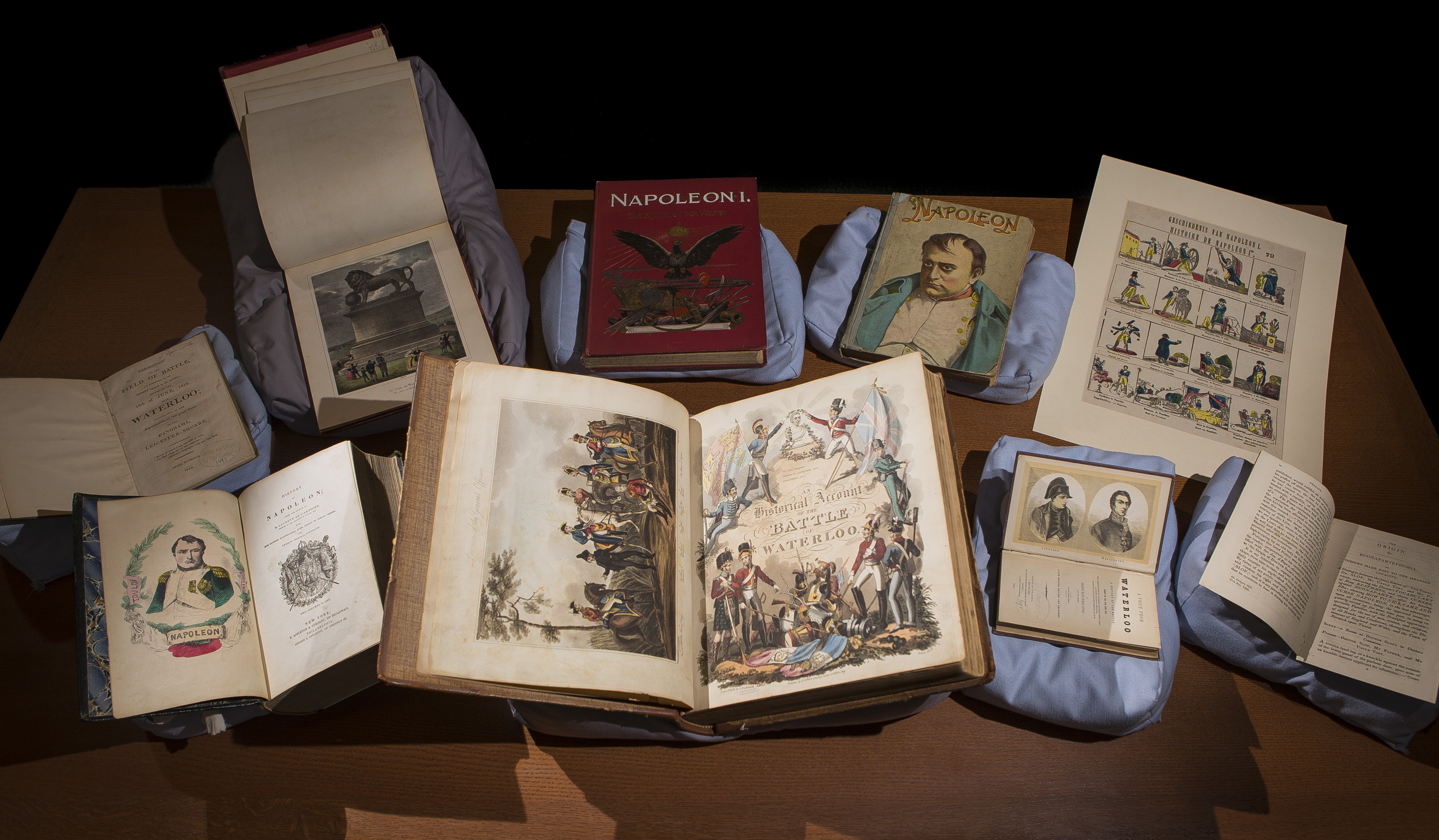 Contained in the Napoleon collection are more than 100 books and maps that are specifically related to the Battle of Waterloo with over 30 publications from 1815 and 1816. The Napoleon Collection housed in the DePaul University Special Collections and Archives section contains 4,000 volumes. (Photo by Jeff Carrion)
Contained in the Napoleon collection are more than 100 books and maps that are specifically related to the Battle of Waterloo with over 30 publications from 1815 and 1816. The Napoleon Collection housed in the DePaul University Special Collections and Archives section contains 4,000 volumes. (Photo by Jeff Carrion)More than 100 books and maps are specifically related to the Battle of Waterloo with more than 30 publications from 1815 and 1816. The books, which are open to researchers and the public, provide insight on the immediate impressions and interpretation of Napoléon’s ultimate defeat.
“One can study and contextualize titles dating from the late 19th and early 20th centuries, including personal recollections and commentary drawn from official documents,” said Nelson.
Additional bequests to the library have enhanced the collection, including materials from the collections of Dr. Max Thorek, Milton Lewis and Leslie H. Kuehner, whose collection originally resided at Christian Brothers University in Memphis, Tennessee, before being transferred to DePaul in 2010.
Learn more about the collection at http://bit.ly/scdpu.
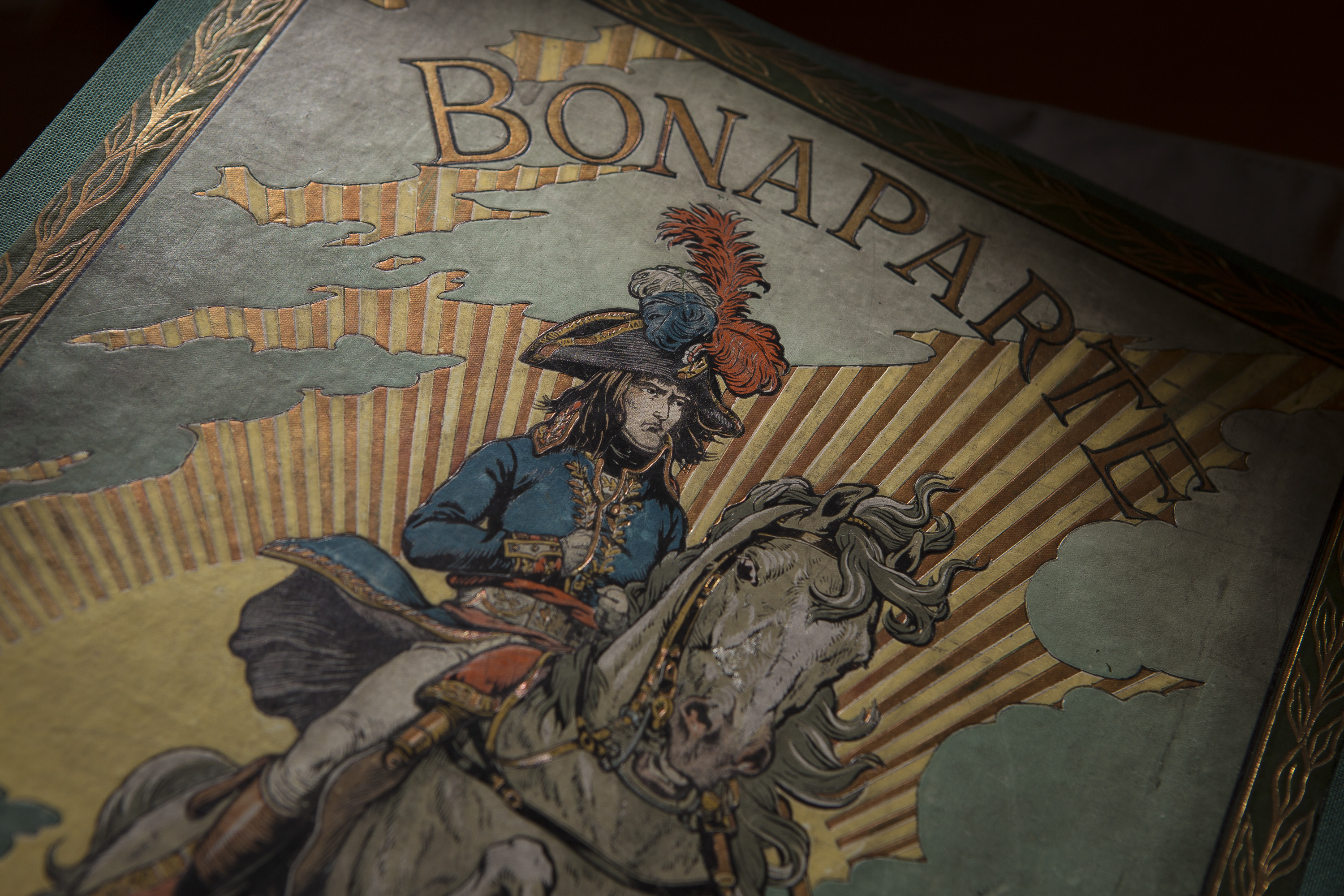 “Bonaparte” written in 1910 by Gorges Montorgueil is part of the Napoleon collection, which dates back to 1937 and was started from the estate of Otto Lemke. (Photo by Jeff Carrion)
“Bonaparte” written in 1910 by Gorges Montorgueil is part of the Napoleon collection, which dates back to 1937 and was started from the estate of Otto Lemke. (Photo by Jeff Carrion)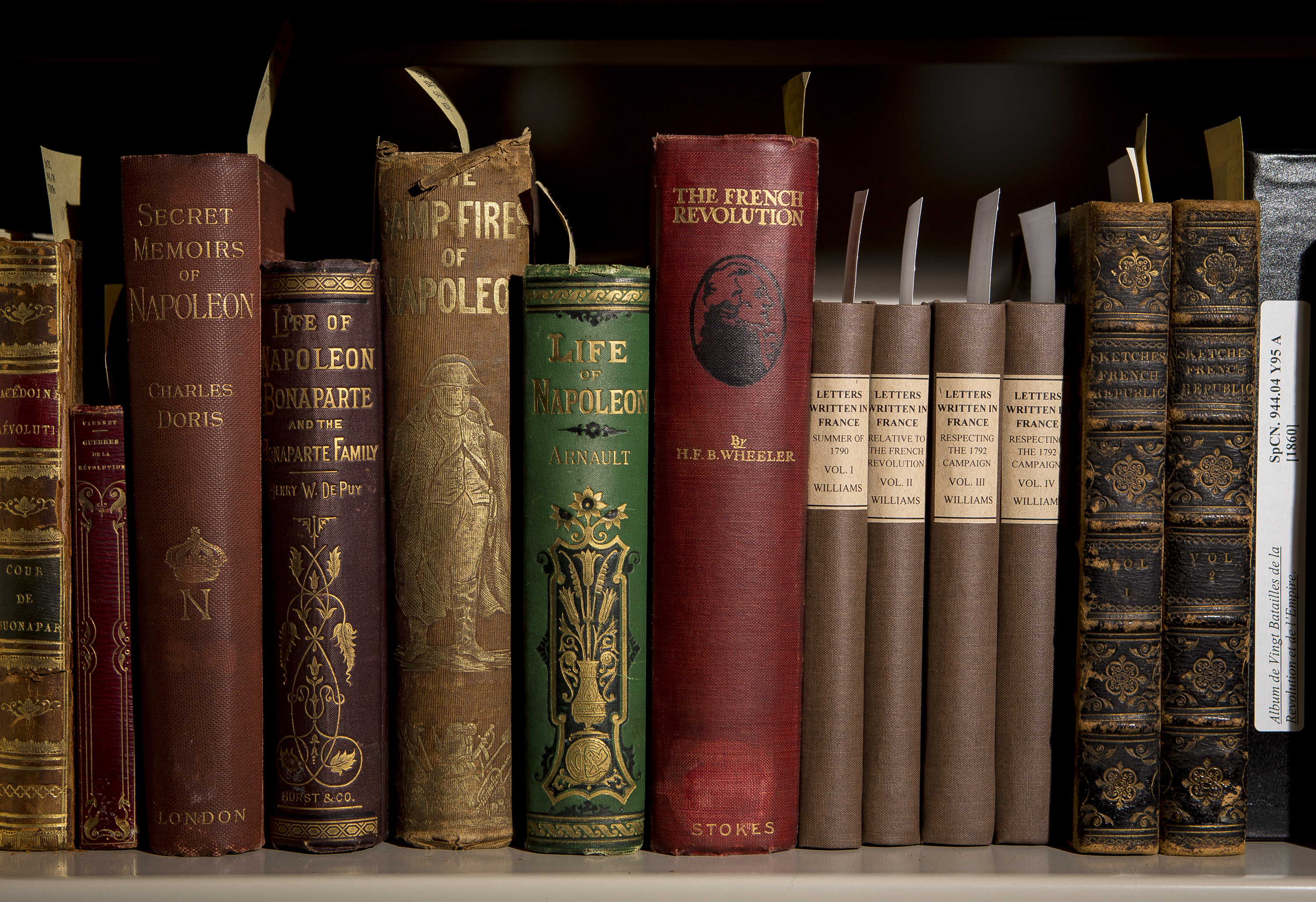 Lining an entire wall in the DePaul University Special Collections and Archives section is the Napoleon collection, which contains 4,000 volumes. The collection dates back to 1937 and was started from the estate of Otto Lemke, who amassed Napoleonic literature with a special emphasis on biographical accounts of Napoleon and his military campaigns. (Photo by Jeff Carrion)
Lining an entire wall in the DePaul University Special Collections and Archives section is the Napoleon collection, which contains 4,000 volumes. The collection dates back to 1937 and was started from the estate of Otto Lemke, who amassed Napoleonic literature with a special emphasis on biographical accounts of Napoleon and his military campaigns. (Photo by Jeff Carrion)
###
Source:
Tom Mockaitis
tmockait@depaul.edu
773-325-7471
Media Contact:
Jon Cecero
jcecero@depaul.edu
(312) 362-7640